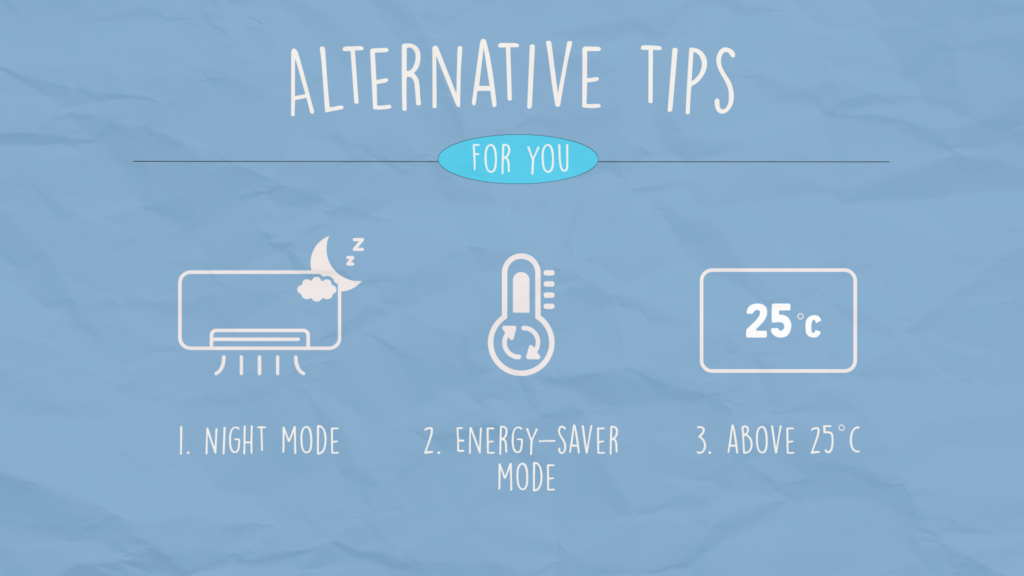Written by Kaylene Lim & Ong Natalie
Singapore may not have the four seasons – hello, tropics – but boy does it feel like summer is at its peak these days. Not only has the temperature been hot, hot, hot, the humidity levels are through the roof too.
Enter air conditioners. They are are a godsend to our lives. It is also a strategy when people need to catch a break from Singapore’s weather, that we retreat to a mall in order to take advantage of the available air conditioning. Besides malls, they can also be found in our schools, our public transport, and even our airports.
This is all thanks to our founding father, Mr Lee Kuan Yew, who once said: “Air conditioning was a most important invention for us, perhaps one of the signal inventions of history. It changed the nature of civilization by making development possible in the tropics.”
Air conditioners are omnipresent in our daily activities. Whether for studying, sleeping, or even simply for the sake of comfort, they have become a part of our lives. But every time it is activated, we undermine the large amounts of energy used up by these devices.
An average air conditioning system would usually use about 3000 to 5000 watts of electricity. That’s 24% of energy use in an average household, according to a study done by the Singapore National Environment Agency, and is part of half of the energy taken up by a family!
Lately, the impact of our Earth’s climate crisis has been so drastic, that it has brought more awareness and attention as we can see and feel the changes. The effects of climate change are growing more prominent in Singapore, with heat from the earth’s surface absorbed by greenhouse gases, contributing to the greenhouse effect and heating up our atmosphere. Sure, there are various other activities to point a finger toward for heightening climate change on our island, such as the burning of fossil fuels or industrial activities.
But let’s take a step back and take some accountability for what we do. After all, it is not just those people who are one-hundred per cent at fault for this. Climate change is brought on by a variety of means, including the little things that individuals do that eventually pile up into hastening global warming.
Air conditioning takes up a lot of energy. Besides electricity, they also use fluorocarbons: A greenhouse gas that is absorbed to quicken the greenhouse effect.
Now that you have a clearer picture of how air conditioning can directly impact global warming, here are some ways you can keep cool without maintaining the former’s continuous run.

methods
Keep it Green!
Yes, the first suggestion is to bring in plants, literal green. If you are not able to care for regular-sized potted plants, placing some succulents in each room does just the same. You can either source them from your neighbourhood florist or purchase them online from local e-shopping websites.
Carbon dioxide, another greenhouse gas, is taken in by plants as a raw product for photosynthesis. By absorbing carbon dioxide from the environment, plants cool the atmosphere as water vapour is released from the bottom of the leaves. That way, you can brighten up a room as well as keep the air refreshing!
Drink up!
Drinking fluids, especially cold water, also does the job! If you want to make full use of your fluid intake, fill a 1.5L bottle of water and place it in the refrigerator. Wait for a couple of minutes and you have a solid amount of sustenance to last the day while fighting the heat! You can also fill half the bottle with equal amounts of ice cubes and water if you need that drink stat.
You only need to rely on one household device to stay cool; that is your refrigerator. After all, it is the device using up the most electricity out of every other household device. While the refrigerator is in use, you do not need to worry about wasting more electricity in the household. Simply relying on the refrigerator reduces the usage of other electronic devices that keeps items chilled – An example being the air conditioner.
Lighten your wardrobe!
Add light colours to your home wear to keep yourself cool! Aside from adding more colour variety to your wardrobe, introducing it into your wardrobe can help you brace the heat at home thanks to scientific reasoning.
Dark-coloured clothing is unable to reflect the sun’s rays while light-coloured clothing is able to do so. Hence, light-coloured clothing does not trap heat from the sun and relieves you of suffering in hot weather in contrast to dark-coloured clothing which absorbs varying amounts of heat depending on its shade.
The lighter the shade of colour present on your clothes, the fewer rays of sun it absorbs. Therefore, the sun will be more merciful upon you and you will not suffer under the heat as much as wearing dark-coloured clothing.
Shut your curtains!
Finally, channel your inner edgelord and dramatically shut your curtains! Even if you are not a vampire – or someone pretending to be one – Shutting the curtains or drawing the blinds does its job of making you suffer less in the heat.
Windows allow a lot of light to enter a room. Whenever light arrives, heat follows too. Therefore, keeping the curtains shut reduces the amount of sunlight coming through, decreasing the temperature of the room when it was first exposed to the sun’s rays directly.

Alternatives
Perhaps you would like to continue using your air conditioner after the suggestions. How about a compromise: let’s use the air conditioner for a shorter period of time.
Only use the air conditioner when sleeping
You can use the air conditioner only when you are going to sleep. Only switching on the air conditioner while sleeping is less damaging to the environment and to your family’s electrical expenses. Imagine turning on the air conditioner for 24 hours, now imagine the electricity bill. It’s high, isn’t it? (PS: the cost of electricity is also increasing!
Above 25 degrees Celsius
You can turn your room’s air conditioner to a temperature above 25 degrees celsius. This is the recommended temperature by National Environment Agency Singapore (NEA). It is good to set your air conditioner a few degrees lower than the temperature outdoors. This will allow your air conditioner to reduce humidity in the air, keep temperatures within a safe range for your home’s construction and help you lower your home’s electrical expenses.
On the other hand, if you set the air conditioner’s temperature lower than 25 degrees celsius, the air conditioner will not only be unable to reach its target temperature, it will also run longer to cool the room, wasting larger amounts of energy and wearing down the air conditioner, leading to a possibility of overheating and shutting down.
Energy-saver mode
You can adjust your air conditioner to energy-saver mode. Energy-saver mode or the power-saver mode helps to reduce the air conditioner’s performance to an extent and reduces the amount of energy it uses.




